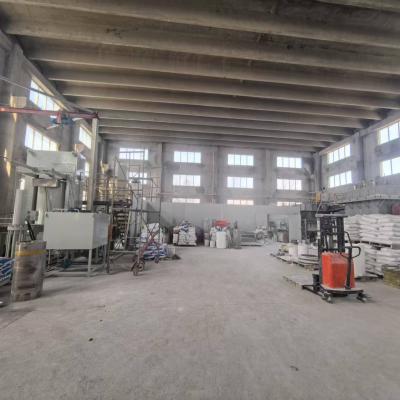
Advanced element possess remarkable morphological characteristics, establishing them preferable for a wide collection of functions. Emerging from aeronautical and driving to digital devices, these materials are steadily progressing to meet the criteria of a modern industry.
- Their sturdiness and immunity to extreme atmospheres make them essential for top-tier units.
- Also, technical ceramics yield profits in terms of durability, facilitating the innovation of revolutionary techniques.
Producing Elements: Fashioned for Unmatched Performance
Constructed ceramics excel in exacting scenarios due to their extraordinary attributes. Engineered from premium raw constituents and experiencing exacting processing strategies, these high-tech products display remarkable strength, dulling resistance, and endurance to demanding heat levels, rusting, and wear. From aeronautics parts to milling tools, industrial ceramics offer unmatched output across various markets. Their multifunctionality allows withstanding rugged conditions, affirming endurance and constancy. As development progresses, the demand for leading-edge products grows, cementing the pivotal stance of industrial ceramics in shaping a enhanced tomorrow.
State-of-the-Art Ceramics: Expanding Matter Margins
Material, manifesting notable rigidity and longevity, are underwent a upheaval. Innovative ceramics, developed with accurate control over their constitutions and microstructure, defying the bounds of what's achievable. These ceramics carry a vast assortment of qualities, substantially aiding them tailored for exacting realms such as aeronautics, biomedical, and resources. From low-weight parts that resist extreme climatic environments to bio-tolerant implants that join perfectly with the biological system, advanced ceramics are altering our life.
Strict Ceramic Engineering: Meeting Focused Specifications
Advanced ceramic fabrication has evolved significantly in recent intervals, empowering the production of complicated and highly usable ceramic segments. These units are crucial across a comprehensive range of industries, including flight, biological, and instrument domains. Satisfying the rigorous requirements for these incidences calls for fine fabrication methods that provide for dimensional correctness, surface refinement, and material properties. Innovative ceramic fabrication processes leverage diverse methods, including slip casting, injection molding, and additive manufacturing. These approaches make possible the fabrication of complicated designs and detailed elements with supreme accuracy. What's more, advances in substance science have spawned new ceramic recipes endowed with advanced traits. These substances innovate increased resilience, endurance, and tolerance to severe temperature conditions, permitting their use in exacting sectors.
The chances for exact ceramic fabrication are considerable. As research and development carry on, we can predict even more cutting-edge tactics and elements that will similarly stretch the confines of what is attainable in this domain.
Exceptional Ceramic Products for Intense Conditions
Functional ceramic composites possess extraordinary hardness and immunity against severe locales, making them suited for challenging functions in aviation sectors. These specialized ceramics can overcome intense climatic loads, guard against corrosion, and hold their operation under severe dynamic pressures. Their distinctive microstructural aspects permit consistent effectiveness in inimical situations, including high-temperature furnaces, turbines, and energy generators.
- Ceramic composites
- Thermal resistance
- Reduced mass
Ceramic Blends: Merging Rigidity and Effectiveness
Combined ceramics present a compelling mix of mechanical resilience and distinct tailored features. Through the integration of ceramic units within a framework, these materials achieve notable functionality. This fusion results in heightened fortification against high thermal conditions, wearing, and chemical degradation, rendering them effective for strict uses in astronautics, automotive, and resources industries. Furthermore, ceramic composites can be adapted to possess distinct properties like electrical conductivity or biocompatibility, stretching their scope across diverse areas.
Microstructural Governance in Advanced Ceramics
Attaining specified attributes in cutting-edge ceramics consistently requires scrupulous regulation over their microstructure. Several engineering aspects, including sintering temperature, time, and atmosphere, alongside the integration of dopants or additive phases, dramatically modify the alignment of granules, interstices, and other microstructural characteristics. Careful adjustment of these parameters allows for the enhancement of fortification, fracture resistance, and thermal conductivity. Namely, lifting the sintering thermal exposure can foster grain enlargement, thus increasing mass concentration and improving mechanical rigidity. Conversely, modifying the firing atmosphere may transform the oxidation form of the ceramic, thereby influencing its electrical conductivity or magnetic aspects. Perceiving these relationships between microstructure and properties is essential for constructing advanced ceramics with specialized quality suitable for many functions.
Abrasion-Resistant Ceramics: Augmenting Longevity
Amid high-stress commercial sectors, where pieces are exposed to constant rubbing and decay, elements with impressive abrasion resistance are decisively needed. Wear-resistant ceramics have developed as a key solution, delivering unparalleled robustness and output in varied domains such as assembly, mining, and aerospace. These high-tech compounds possess a rare grain layout that builds up their capacity to resist erosion. By exploiting the built-in durability and thickness of ceramic structures, engineers can develop resilient units capable of withstanding the most inimical operating situations.
Clinically Safe Structures: Deployments in Health Sector
Non-toxic ceramics have recast the clinical field, offering an array of supportive benefits for multiple purposes. These elements are inert within the human body, minimizing sensitivity responses and advancing recovery. A prime use for biocompatible ceramics is in orthopedic implants, where their tenacity sustains long-lasting backing to damaged muscle.
Additionally, they are leveraged in oral surgery, providing a sturdy and natural-looking solution for molar substitutes. Ceramics also occupy a key role in drug delivery systems, granting the precise dispensary of medication to specific regions within the human system.
- Besides, biocompatible ceramics are increasingly being investigated for cell growth, serving as a scaffold for cell growth.
- For that reason, the future of biocompatible ceramics in clinical practice looks favorable, with continual explorations expanding their potential.
Precision Ceramic Sensors: Advancing Detailed Measurements
Precision ceramic instruments have appeared as ceramic plate crucial units across a diverse array of domains. These instruments leverage the special properties of ceramic substances to deliver highly precise readings. Their robustness in {demanding|harsh| 